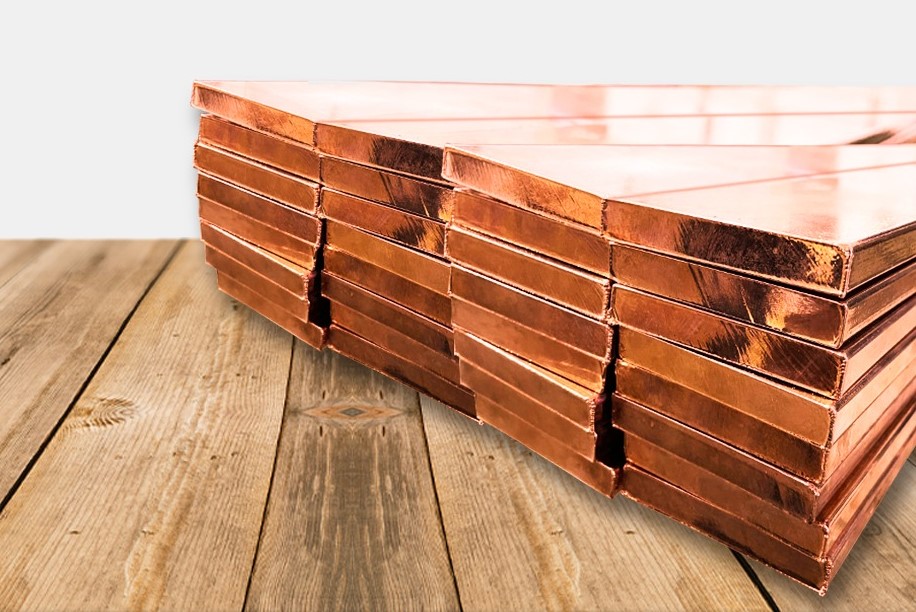Copper flats are becoming increasingly popular in various applications due to their unique properties and aesthetic appeal. From architectural designs to electrical components, copper flats are an essential material that offers both functionality and beauty. Their malleability, durability, and resistance to corrosion make them an ideal choice for a wide range of projects, whether you're a DIY enthusiast or a professional contractor. This article will delve into the various aspects of copper flats, exploring their uses, benefits, and why they are a must-have in modern construction.
The versatility of copper flats can be seen in their diverse applications. They are often used in electrical wiring, plumbing, and decorative elements, making them a staple in both residential and commercial projects. Moreover, their natural resistance to bacteria and fungi makes them an excellent choice for environments that require hygiene, such as hospitals and kitchens. Understanding the properties and uses of copper flats can help you make informed decisions for your projects.
In this comprehensive guide, we will explore the various qualities of copper flats, answer common questions surrounding their applications, and provide tips on how to incorporate them into your next project. Whether you are looking to enhance your home’s aesthetic or improve its functionality, copper flats offer endless possibilities that you won’t want to overlook.
What Are Copper Flats?
Copper flats refer to flat pieces or sheets of copper that are commonly used in construction, manufacturing, and various other applications. These sheets can vary in thickness and size, making them suitable for a wide range of uses. Their flat design allows for easy handling and installation, which is a significant advantage for builders and craftsmen alike.
What Are the Properties of Copper Flats?
- Conductivity: Copper is one of the best conductors of electricity, making copper flats ideal for electrical applications.
- Corrosion Resistance: Copper has excellent resistance to corrosion, ensuring longevity in various environments.
- Malleability: Copper can be easily shaped and formed without breaking, allowing for intricate designs.
- Aesthetic Appeal: The natural reddish-brown hue of copper adds a warm and inviting look to any project.
How Are Copper Flats Manufactured?
The manufacturing process of copper flats involves several steps, including:
- Mining: Copper ore is extracted from the ground.
- Smelting: The ore is heated to separate the copper from impurities.
- Refining: The copper is purified to achieve high-quality standards.
- Rolling: The purified copper is rolled into flat sheets of varying thickness.
What Are the Common Applications of Copper Flats?
Copper flats are utilized in numerous industries and applications. Some of the most common uses include:
- Electrical components such as connectors and bus bars.
- Plumbing systems for pipes and fittings.
- Architectural features like roofing, gutters, and decorative elements.
- Musical instruments, particularly brass instruments.
What Are the Benefits of Using Copper Flats?
When considering materials for your projects, the benefits of copper flats should be taken into account:
- Durability: Copper can withstand harsh conditions, ensuring a long lifespan.
- Low Maintenance: Copper flats require minimal upkeep, making them a cost-effective choice.
- Eco-Friendly: Copper is recyclable, making it an environmentally responsible option.
Are There Any Drawbacks to Copper Flats?
While copper flats have numerous advantages, they also have some drawbacks to consider:
- Cost: Copper can be more expensive than other metals, impacting budget considerations.
- Oxidation: Copper can tarnish over time, which may require additional cleaning or treatment.
- Weight: Copper is heavier than some alternative materials, which can affect installation methods.
How to Incorporate Copper Flats into Your Projects?
Incorporating copper flats into your projects can enhance both functionality and aesthetics. Here are some tips:
- Consider using copper flats for accent features in architecture, such as trim or siding.
- Utilize copper flats in electrical wiring systems for improved conductivity.
- Explore creative options like using copper flats in artwork or sculptures.
What Are Some Creative Ideas for Using Copper Flats?
If you're looking to add a unique touch to your projects, consider these creative ideas:
- Create custom light fixtures using copper flats for a modern look.
- Design decorative wall panels that showcase the beauty of copper.
- Make personalized home décor items, such as picture frames or coasters.
Conclusion: Why Choose Copper Flats for Your Next Project?
In conclusion, copper flats are a versatile and valuable material that can elevate the quality of your projects. Their unique properties, aesthetic appeal, and numerous applications make them an essential choice for builders and designers alike. Whether you're working on a new construction project or looking to upgrade your existing space, incorporating copper flats can provide both beauty and functionality. Embrace the potential of copper flats and discover how they can transform your next project into something extraordinary.
Discovering The Beauty Of Cheviot Hills Park
Unlocking The Power Of Math: Why Math Comes First In Math
Exploring The Beauty And Significance Of Blue Iris

.jpg?crop=(0)
